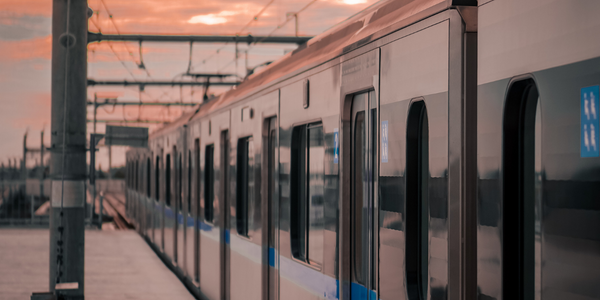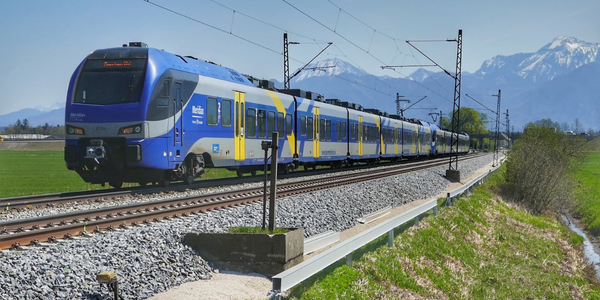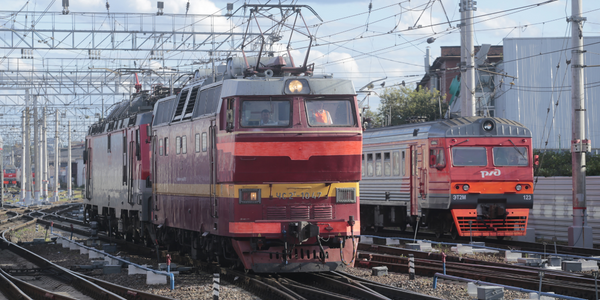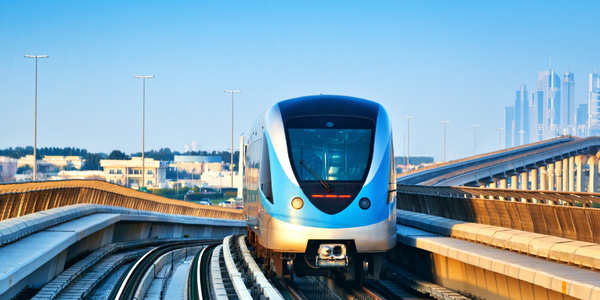Download PDF
Camunda BPM at DB Cargo
Technology Category
- Application Infrastructure & Middleware - API Integration & Management
Applicable Industries
- Railway & Metro
Applicable Functions
- Logistics & Transportation
Use Cases
- Process Control & Optimization
- Service Parts Management
Services
- System Integration
- Software Design & Engineering Services
The Challenge
DB Cargo, the most productive freight railway in Europe, faced a significant challenge in long-distance, cross-border traffic - ensuring the reliable and on-schedule transport of cargo. As part of the European production alliance Xrail, DB Cargo aimed to optimize cross-border interoperability through a central broker and agreed process models. However, the initial architectural approach to connect DB Cargo to the Xrail production alliance proved inefficient. The business logic and technical functions required for the Xrail processes had to be distributed across all involved systems, leading to increased complexity in service orchestration and transformation functionalities.
About The Customer
DB Cargo AG is a leading freight railway in Europe, running 4,520 trains per day. Based in Frankfurt am Main, the company provides Europe-wide rail transport for business customers from various sectors. One of the biggest challenges in long-distance, cross-border traffic is ensuring the reliable and on-schedule transport of cargo. To address this, DB Cargo is part of the European production alliance Xrail, which aims to optimize cross-border interoperability through a central broker and agreed process models. The IT system Transport Chain and Service Management (TSM) serves as a platform for connecting DB Cargo to Xrail Capacity Booking.
The Solution
To reduce complexity and ensure efficient integration of Xrail business logic into DB Cargo's systems, a central orchestration component was implemented through the new Transport Chain and Service Management (TSM) system. The Camunda platform formed the basis for this system, providing a flexible integration with legacy systems and fast adaptability to changing conditions. The Camunda platform also ensured compliance with high availability and response time behavior SLAs. The workflow engine was embedded in the TSM application, making Camunda a lightweight BPMN solution that could be integrated with common development tools. The TSM system was operated in the cloud, leveraging the benefits of scalability, high availability, and the pay-per-use payment model.
Operational Impact
Related Case Studies.

Case Study
Building Smart IoT-Connected Railways
• Difficult environment. Communications equipment on trains must function properly in harsh conditions, such as environment temperatures ranging from -25°C to +85°C, according to the EU standard EN50155.• Railway regulations. All products in a train must adhere to strict standards, relating to working vibration, power consumption, and lifetime.• Lengthy process. Time to market in the railway industry can take years from concept to mass production, so product design requires a solid long term vision.

Case Study
Connected Transportation: A Smarter Brain for Your Train with Intel
A modern locomotive, for example, has as many as 200 sensors generating more than a billion data points per second. Vibration sensors surround critical components, video cameras scan the track and cab, while other sensors monitor RPM, power, temperature, the fuel mix, exhaust characteristics, and more.Most of today’s locomotives lack sufficient on-board processing power to make full use of all this data. To make matters worse, the data from different subsystems, such as the brakes, fuel system, and engine, remain separate, stored in isolated “boxes” that prevent unified analysis. The data is available, but the technology needed to process it in the most effective manner is not. As new sensors are added to the machine, the problem escalates.

Case Study
Using LonWorks to Keep Acela Trains Zip Along
Canadian transportation company, Bombardier was tasked with building a bullet train system on rails that were designed for lower speed trains. In addition, they had to ensure safe and optimal operation at high speeds, maximize train uptime and enhance communication with passengers.

Case Study
Delhi NCR Metro: A Mobile App Revolutionizing Public Transportation
The Delhi NCR Metro, a major public transportation system in India, was facing a challenge in providing accurate and comprehensive information to its daily commuters and tourists. The lack of a centralized platform for information about metro station details, train schedules, fare details, parking, elevators, and tourist locations was causing inconvenience to the users. The challenge was to develop a mobile app that could provide all this information accurately and conveniently. The app needed to be equipped with GPS services to help users find the nearest metro and renowned locations. An interactive map was also required to assist travelers who were familiar with the metro lines. The goal was to provide maximum information with minimum input.

Case Study
Automated Railcar Inspections Increase Security and Revenue
Providing industry and government customers with intelligent inspection, automation, safety, and security solutions, Duos Technologies Group, Inc. (“Duos” or the “Company” - Nasdaq: DUOT) continually pushes the boundaries of IT. To keep pace with expanding AI-enabled data capture analytics for its edge railcar inspections, the company chose the latest Dell EMC PowerEdge servers.Duos Technologies’ challenge was finding a way to leverage technology as a force multiplier to meet customer requirements for a better, faster inspection process for trains running at full speed. Duos developed innovative data analytic solutions with AI at the edge to conduct more reliable railcar inspections, which are available 24/7/365 in all climates and conditions.






